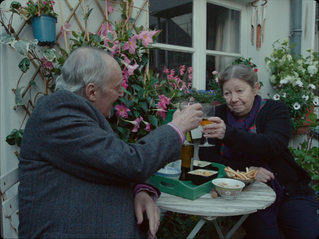The Great Gatsby
- Kirby Moore
- Aug 7, 2021
- 3 min read
Jack Clayton, 1974

The ‘74 adaptation of Fitzgerald’s The Great Gatsby, directed by Jack Clayton and with a screenplay by Francis Ford Coppola, was not warmly received. As with several classic-literature-turned-films, Clayton’s Gatsby was condemned for its inability to reflect the essence of Fitzgerald’s original work; a novel that critics claim to be ‘unfilmable’. Consequently, assessing this impossible film is all the more intriguing, particularly in what is earned through its visual aspects. Indeed, without its literary backbone, Gatsby’s atmosphere rests on its aesthetics: the set design, cinematography and costuming.
Theoni V. Aldredge’s Oscar-winning costumes are ingredients for opulence and ostentation. Courtesy of Ralph Lauren, the men are the epitome of upper-classmenship; they sport an array of pleats and pinstripes, tuxes and tails. The women, too, wear eye-catching ensembles. Though sometimes veering from historical accuracy, they flaunt the classically shapeless silhouettes of the 20s while maintaining the fantastically flapper-esque fashions. Altogether, Aldredge provides the film with a rather delectable wardrobe.
Tom Buchanan (Bruce Dern) is the perfect picture of old money and the 1%. His suits and such are conspicuously debonair, yet it’s his leisurewear that truly embodies the elitist ease of his upper-class lifestyle. Amid affairs, he plays polo, he fences; he flaunts white supremacy like his Ivy League cardigan – pretentiously, tastelessly, and with absolute comfort.
The enigmatic Mr Gatsby (Robert Redford) likewise demonstrates sartorial choices that undoubtedly place him on the stage of the American upper-class. His three-piece suits are not subtle or simple; they feature double-breasted waistcoats with double pockets, with pocket squares and pocket watches. Despite his wealth, however, Gatsby cannot seem to attain the prestige of the likes of the Buchanans. This insecurity fuels overcompensation in his persistence to demonstrate his worthiness to the infamous Daisy Buchanan (Mia Farrow).

Daisy, easily the most controversial character in both the novel and film, wafts through high society in diaphanous fashions of chiffon, organza and marabou, all of which appropriately reflect the insubstantiality of her personality. Had Daisy been crafted as a more sympathetic character, perhaps an audience would better understand Gatsby’s preoccupation with her. And yet, this precise fixation derives from his fascination with American aristocracy. To Gatsby, Daisy is the paragon of the wealth, sophistication and status for which he strives.
Daisy is presented as an insipid, shallow, and capricious woman, with few redeemable qualities. She does, nonetheless, grant the narrative its conclusion by demonstrating just how fleeting and fickle her romantic connections are. Nick Carraway (Sam Waterson), the engaging narrator and storyteller, aptly regards the Buchanans as careless people who “smashed up things and creatures and then retreated back into their money or their vast carelessness.”
In the end, it is the self-made aspect of Gatsby’s affluence that impedes his aspirations; we are reminded that his wealth is the result of bootlegging alcohol during Prohibition. His less-than-legal dealings are emphasised by the company he keeps, and none too subtly at that. Indeed, one can presume no upstanding citizen associates with someone whose cufflinks are human teeth.
The ultimate evidence of Gatsby’s overcompensation is his summer soirées, offering spectators a glimpse into a world of glitz and glamour. Their effervescent atmosphere shimmers off the beads and jewels and strings of pearls. Everything sparkles: chandeliers, champagne coupes, and the wrists of the hands that hold them. Every evening is as dazzling and excessive as the last. Each is followed by the gentle glow of pre-dawn light and soft, pale colour palettes, evoking indistinct tones of regret and sentimentality.
Clayton’s Gatsby is a visual adventure. It unearths vague feelings of nostalgia amidst high-drama and extravaganza. It is a film devoted to its own aesthetic. It’s Casablanca’s eyes combined with the hand-animated sparkles of classic Disney, dusted over a plot of melancholy and murder. It is a film that glitters, though not in a manner restrained by realism or two-dimensionality. It glitters like Fitzgerald’s ‘Jazz Age’, like Old Hollywood, like the myth of the American Dream; "like moths among the whisperings and the champagne and the stars."








Comments